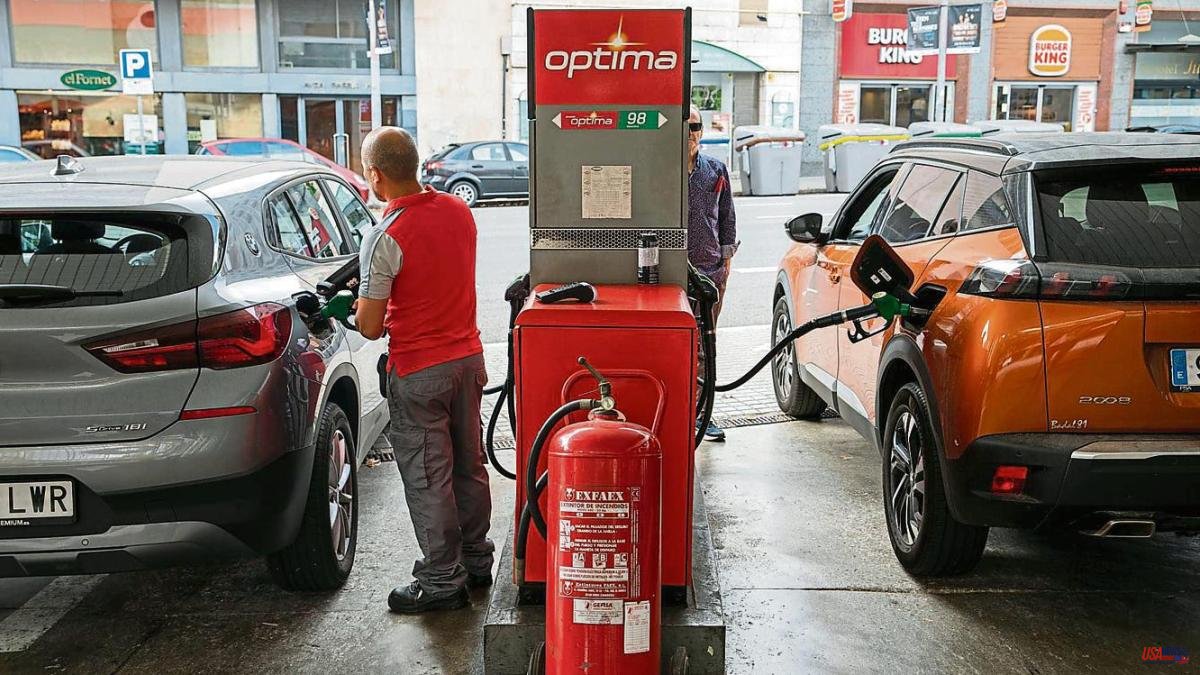The price of electricity for customers of the regulated market (PVPC) in Spain was last week at 160 euros MWh, 48% below what it was before the beginning of the Russian invasion of Ukraine.
The fixed term of the bill for those with a regulated rate (TUR1) in the supply of gas has gone from 31.2 euros in January 2021 to the current 5.1 euros, both due to the drop in the price of gas and public aid. In the case of gasoline and diesel (no longer public aid), the price of a liter has fallen by 22% in the case of gasoline, and by 25% in the case of diesel, and both are paid close to two cents below the price before the outbreak of war. The drop in energy prices is being felt in inflation, which in May stood at 3.2%, the lowest level since July 2021.
Spain is no exception. The average prices of gas and oil in Europe during the month of May have been at the lowest level since 2021, according to the latest analysis by the consultancy Aleasoft. The pockets of all Europeans are already feeling the drop in energy prices on international markets. The big doubt: have the markets lost their fear of war? Bombs continue to fall on Ukraine and already on Russian territory and threaten an escalation of the war conflict that is not reflected on the energy front. Is it, then, a truce or is it that the two matters have been decoupled? "It is difficult to make forecasts in a context as volatile as the current one. Any excuse can be used to send prices soaring again", points out Luis Deza, Director of Energy at the consulting firm Mazars.
No analyst is able at this moment to put their hands to the fire to ensure that this "energy peace" is lasting. "There is a very strange situation in the markets, no one rules out that any day the explosion of a drone in some strategic place could, once again, trigger panic. We continuously monitor the day-to-day and if everything remains the same we expect the trend to continue in the summer, because we favor these low prices more than the high ones, which cause demand to collapse", acknowledges Nacho Rabadán, general manager of the Spanish Confederation of Service Station Employers (CEEES).
Surprises aside, the key to this "energy peace" goes beyond the geopolitical context. The atmospheric conditions have worked and will work in their favor. The fact that there is now less tension in gas and oil prices has, in part, to do with the mild winter temperatures. After the provision of inventories made last year due to the fear of waste, the moderate winter has allowed not to spend all the accumulated, so now it is necessary to make fewer purchases in view of the next winter and the temperatures of this period will directly influence demand.
In any case, the fear of a lack of supply has deflated. "40% of the gas reaching Europe in 2021 came from Russia. There is no liquefied natural gas (LNG), the gas that is transported by ship and not through pipelines, in the world to compensate for a shut-off of Putin's tap. This was the fear that was not fulfilled", explains Luis Deza.
In Europe, large gas-demanding industries, especially in Germany and Poland, replaced it with coal. It has been added that China's awakening from the pandemic has not been as fierce as expected. China, along with South Korea and Japan, are big consumers of LNG, but the recovery of activity in the great Asian power after the pandemic is being slower than expected. "It grows by 2.5%, far from the average of 6% that it used to grow at. But it is not only China that is growing less. It is also betting more on replacing gas with coal and above all with renewable energy. Therefore, the expected return to pre-pandemic consumption is becoming less likely," says Deza.
And it is precisely in renewable energies that consumers can place the most hope for bills to continue to fall. China is the world's first investor in projects that develop offshore wind power. Ukraine's war response plan has also focused on boosting renewable energy with huge amounts of money for its development. As has happened in Spain, where historic productions were recorded in both photovoltaics and wind power in May.
Oil and Russia are other components of this peculiar energy Risk item. The price of a barrel of Brent crude oil, a benchmark in Europe, has fallen by 17% since April. It's close to $75, a far cry from the more than $100 it reached at the height of the war. The fear of the economic contraction in the United States and the escalation of rates by the central banks are pushing down the price of crude oil. For months, the OPEC countries have been trying to balance the market with production cuts, but even they have not they comply with the cut and neither does Russia, which continues to bring its production to the market, despite the European veto, especially through Turkey", explains Inés Calderón, spokesperson for the Association of Petroleum Exporters (AOP).
Yesterday, OPEC and Russia agreed to extend the current supply reduction of 40.46 million barrels per day until the end of 2024, without additional cuts. It remains to be seen whether they comply, although it seems complicated that Russia will turn off the tap for the financing of the war.













